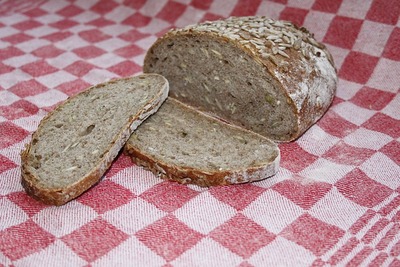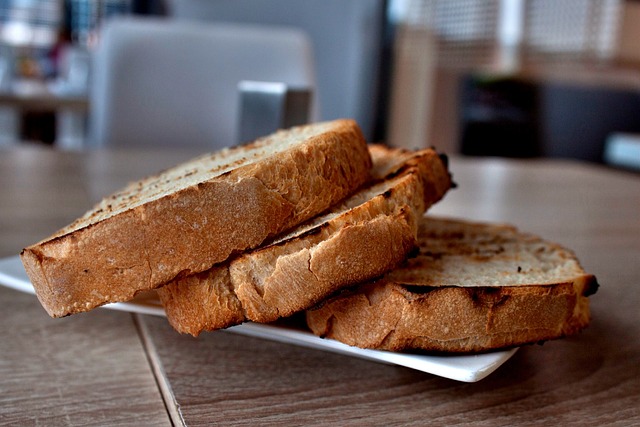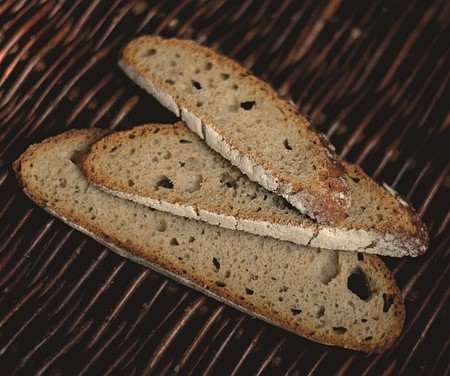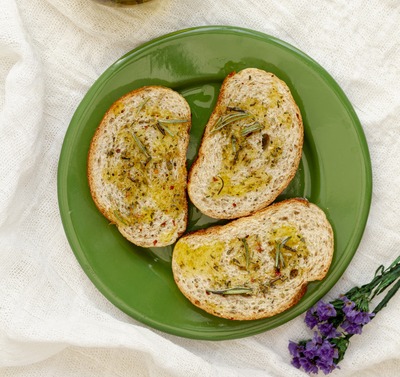Sourdough bread has been a staple in households for centuries, but in recent years, it has gained even more popularity, especially in the world of toast. Known for its unique texture and tangy flavor, sourdough makes for a delicious and versatile toasting bread. The fermentation process gives sourdough bread a distinctive open crumb structure and chewiness, which crisps up beautifully when toasted. Whether you’re enjoying a simple breakfast or a creative toast topped with gourmet ingredients, sourdough bread elevates the experience.
Why Sourdough Bread Makes Great Toast

When it comes to toast, sourdough is often regarded as one of the best options. Its natural fermentation process creates a combination of textures and flavors that make it stand out from other types of bread.
The Texture of Sourdough
Sourdough bread’s open crumb structure is one of the main reasons it makes such good toast. The fermentation process introduces wild yeast and lactic acid bacteria, which create pockets of air within the dough. This results in a light, airy interior that crisps up wonderfully when exposed to heat.
Key Benefits of Sourdough’s Texture for Toasting:
- Crunchy exterior with a soft, chewy interior
- Air pockets that allow for even toasting
- Stays fresh longer, even after toasting
This texture makes sourdough versatile for various toasting methods, as it retains moisture inside while achieving a crispy outer layer.
The Flavor Profile of Sourdough
The flavor of sourdough bread is another reason it’s so well-suited for toast. During fermentation, natural acids develop, giving sourdough its signature tangy taste. When toasted, this flavor becomes even more pronounced, creating a deeper, more complex taste that complements a wide variety of toppings.
Why the Flavor of Sourdough Shines in Toast:
- Tangy taste that intensifies when toasted
- Natural fermentation adds depth to the flavor
- Pairs well with both sweet and savory toppings
Whether you enjoy it with simple butter or elaborate ingredients like smoked salmon, the unique flavor of sourdough enhances any topping you choose to add.
Different Ways to Toast Sourdough Bread
There are several methods for toasting sourdough bread, each with its own benefits. Whether you’re using a toaster, an oven, or a skillet, the key is to find the right balance between achieving a crispy crust and maintaining the bread’s soft interior.
Toasting in a Toaster
One of the simplest and most convenient ways to toast sourdough bread is in a standard toaster. Because of its thicker structure, sourdough requires a bit more care to ensure even toasting without burning.

Steps for Toasting in a Toaster:
- Slice the bread into moderately thick pieces (about ½ to ¾ inch thick).
- Set the toaster to medium heat to avoid burning the crust while still achieving a nice crunch.
- Toast for 2-4 minutes, depending on the toaster and your preferred level of crispness.
- Check for even browning. Sourdough can brown quickly due to its natural sugars, so monitor it closely.
Pro tip: Flip the slices halfway through toasting if your toaster has uneven heat distribution.
Toasting in the Oven
Oven-toasting sourdough bread is ideal when you’re preparing toast for multiple people or want a more uniform result. It also allows for more control over the level of crispness.
Steps for Oven Toasting:

- Preheat the oven to 375°F (190°C).
- Place the slices of sourdough directly on the oven rack or on a baking sheet.
- Bake for 5-7 minutes, flipping halfway through to ensure both sides are evenly toasted.
- Remove when golden-brown and let the slices cool slightly before adding toppings.
Oven toasting provides an even, consistent toast and allows you to prepare several slices at once, making it perfect for a family breakfast or brunch.
Toasting in a Pan
For a more rustic approach, you can toast sourdough bread in a skillet. This method adds a deeper, more buttery flavor to the bread, especially if you use oil or butter in the pan.

Steps for Pan Toasting:
- Heat a skillet over medium heat and add a small amount of butter or oil.
- Place the sourdough slices in the pan, ensuring each side is coated with the fat.
- Toast each side for 2-3 minutes until golden-brown and crispy.
- Remove and serve with your favorite toppings.
Pro tip: For an extra crispy texture, press the slices down with a spatula while they’re toasting.
Best Toppings for Sourdough Toast
Sourdough toast is incredibly versatile, working well with both sweet and savory toppings. Its robust flavor and texture make it a perfect canvas for all kinds of delicious combinations.
Sweet Toppings
If you prefer a sweet start to your day, sourdough toast pairs beautifully with various spreads and fruits. The tanginess of the bread complements the sweetness of the toppings, creating a balanced flavor.
Popular Sweet Toppings:

- Honey: Drizzle over buttered sourdough for a simple yet indulgent treat.
- Jam or fruit preserves: The sweetness of raspberry or strawberry jam contrasts perfectly with sourdough’s tang.
- Nut butters: Spread almond or peanut butter for added protein and creaminess.
- Fresh fruit: Add sliced bananas, berries, or apples for a fruity, refreshing touch.
Savory Toppings
Sourdough’s flavor and structure also make it an excellent base for savory toppings, whether you’re looking for a hearty snack or a light meal.
Popular Savory Toppings:
- Avocado: A classic choice, mashed avocado with a pinch of salt, pepper, and a drizzle of olive oil is always a hit.
- Eggs: Top your toast with a poached or fried egg for a filling and nutritious breakfast.
- Smoked salmon: Pair with cream cheese and capers for a sophisticated, savory toast.
Creative Toppings
For those who enjoy experimenting with flavors, sourdough toast provides an excellent opportunity to get creative with your toppings.
Creative Combinations:
- Ricotta and figs: Spread creamy ricotta on your toast and top with sliced fresh figs and a drizzle of honey for a sweet-savory delight.
- Hummus and roasted vegetables: Spread hummus on the toast and top with roasted peppers or zucchini for a Mediterranean-inspired meal.
- Goat cheese and honey: The tang of goat cheese and the sweetness of honey make for a delicious, complex flavor combination.
Specialty Sourdough Toasts
Sourdough toast offers endless possibilities for creative and delicious variations. The bread’s tangy flavor and chewy texture make it a perfect base for both savory and sweet dishes. Here are three specialty sourdough toast recipes that highlight the versatility of this amazing bread.
Sourdough Garlic Toast

Sourdough Garlic Toast is a flavorful and savory option, ideal as an appetizer or side dish. The combination of crispy toast and garlic-infused butter elevates any meal.
How to Make Sourdough Garlic Toast:
- Slice the sourdough into thick pieces.
- Rub a garlic clove over the surface of each slice for a subtle garlic flavor.
- Brush with olive oil or melted butter.
- Toast in the oven at 375°F (190°C) for 5-7 minutes, until golden and crispy.
- Add a sprinkle of salt and herbs like parsley or oregano for extra flavor.
Sourdough French Toast
For a sweet twist, Sourdough French Toast adds a tangy edge to the traditional French toast. The dense structure of sourdough soaks up the egg mixture, giving it a rich, custardy texture.
How to Make Sourdough French Toast:
- Whisk together 2 eggs, ½ cup of milk, and a pinch of cinnamon in a shallow bowl.
- Dip each slice of sourdough in the mixture, ensuring both sides are coated.
- Heat butter in a skillet over medium heat.
- Cook the slices for 2-3 minutes on each side until golden brown.
- Serve with maple syrup or fresh fruit for a delicious breakfast treat.
Sourdough Grilled Cheese Toast
Sourdough Grilled Cheese Toast combines the tangy flavor of sourdough with the gooey goodness of melted cheese. The bread’s thick texture holds up well to grilling, resulting in a perfect, crispy exterior.

How to Make Sourdough Grilled Cheese Toast:
- Butter one side of each slice of sourdough bread.
- Place slices of cheese (such as cheddar, Gruyère, or mozzarella) between the unbuttered sides of the bread.
- Heat a skillet over medium heat and place the sandwich in the pan, buttered side down.
- Grill for 3-4 minutes on each side, pressing lightly until the bread is golden-brown and the cheese is fully melted.
- Serve immediately for the best results—crispy on the outside, soft and cheesy inside.
Sourdough in Toast Culture
Sourdough toast has transcended its simple origins to become a staple in artisan cafés and home kitchens around the world. Its unique flavor and health benefits make it an increasingly popular choice among food enthusiasts.
The Rise of Sourdough in Artisan Toasting
In recent years, sourdough toast has become a favorite in trendy cafés and restaurants. Known for its authentic taste and rustic appeal, it is often served with gourmet toppings such as avocado, poached eggs, or artisanal spreads.
Sourdough’s natural fermentation process and its ability to pair well with a wide range of flavors have made it a preferred choice for those seeking something more than the average slice of toast. Whether enjoyed as part of a high-end brunch or a simple breakfast at home, sourdough toast has earned its place in modern food culture.
Sourdough Toast as a Healthier Option
Beyond its flavor, sourdough bread is also considered a healthier option compared to many other types of bread. Here are a few reasons why sourdough toast is often viewed as a more nutritious choice:
- Easier digestion: The fermentation process in sourdough breaks down gluten and other components, making it easier on the digestive system.
- Lower glycemic index: Sourdough bread causes a slower rise in blood sugar levels, making it a better option for those watching their blood sugar.
- Rich in nutrients: The natural fermentation enhances the bioavailability of nutrients such as iron, magnesium, and zinc.
Choosing sourdough toast can provide a satisfying and healthier alternative to regular toast, especially when paired with nutrient-rich toppings.
Tips for Making the Perfect Sourdough Toast
| Tip | Description |
|---|---|
| Use Thicker Slices | Thicker slices of sourdough help retain the chewy interior while allowing the outside to crisp up perfectly. |
| Let the Bread Sit for a Day | Slightly stale sourdough bread actually toasts better, as it dries out and crisps more evenly when toasted. |
| Toast at Medium Heat | Avoid high temperatures, which can burn the crust and under-toast the interior. Toasting at medium heat ensures a golden-brown crust and soft center. |
Frequently Asked Questions (FAQs)
Is sourdough bread better toasted?
Yes, sourdough bread’s unique tangy flavor and chewy texture make it ideal for toasting. Toasting enhances its natural flavors, giving it a crispy crust while keeping the inside soft.
Can you freeze sourdough bread for toasting?
Absolutely! Sourdough bread freezes well. Simply slice it before freezing so you can toast slices directly from frozen. This way, you always have fresh sourdough toast ready in minutes.
Why is sourdough better than other breads for toast?
Sourdough is better for toasting due to its dense crumb structure and flavor profile. The fermentation process gives sourdough a more complex taste, which intensifies when toasted. Additionally, sourdough’s natural acidity helps it stay fresher for longer, making it a great option for toasting, even a few days after baking.
How do you keep sourdough toast from getting soggy?
To keep your sourdough toast crisp, avoid adding wet toppings directly onto the bread. Instead, use drier toppings first, like butter or cheese, and add wetter ingredients like tomatoes or avocados just before serving. Toast the bread thoroughly to achieve a crunchy base that holds up well to toppings.

